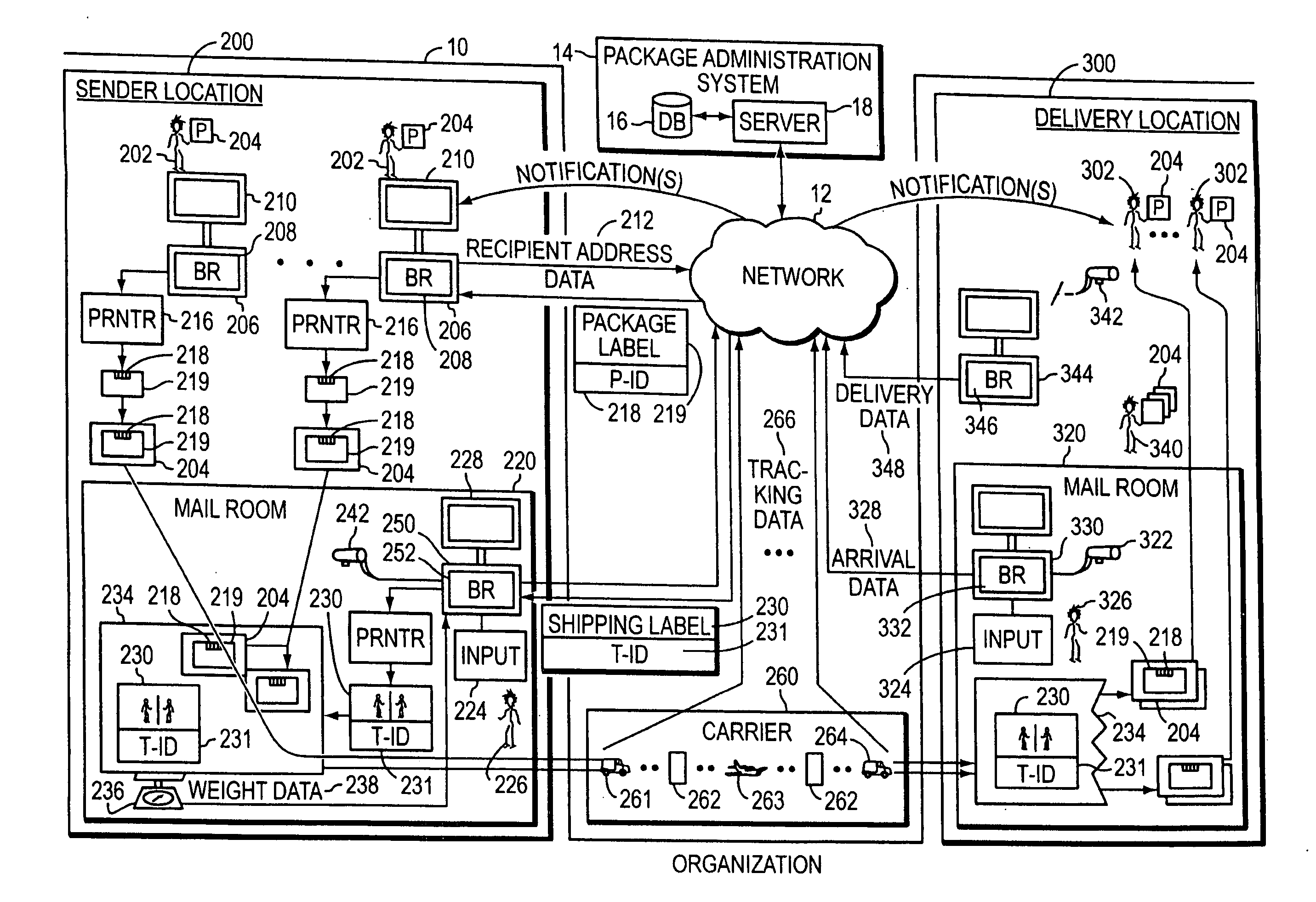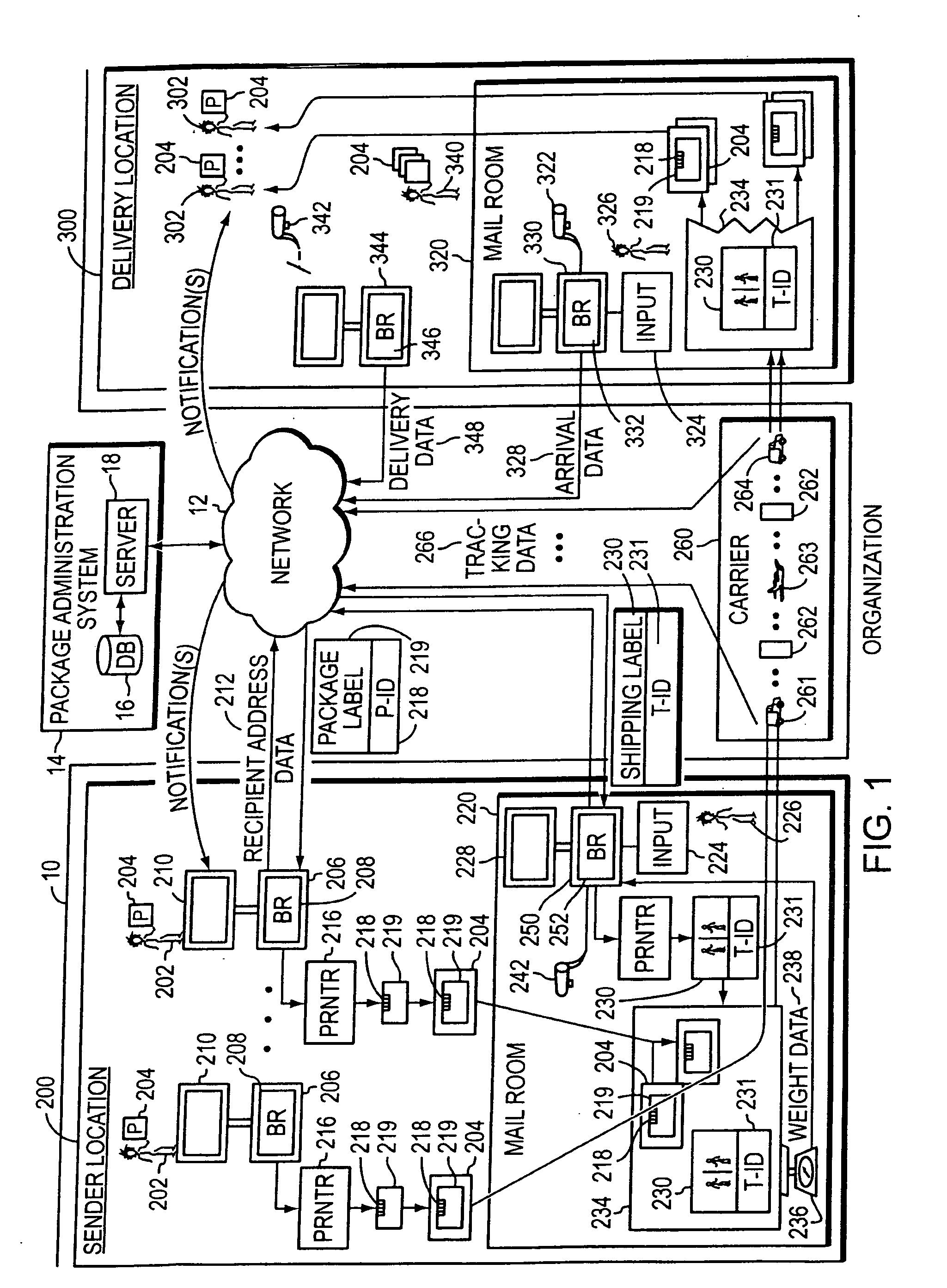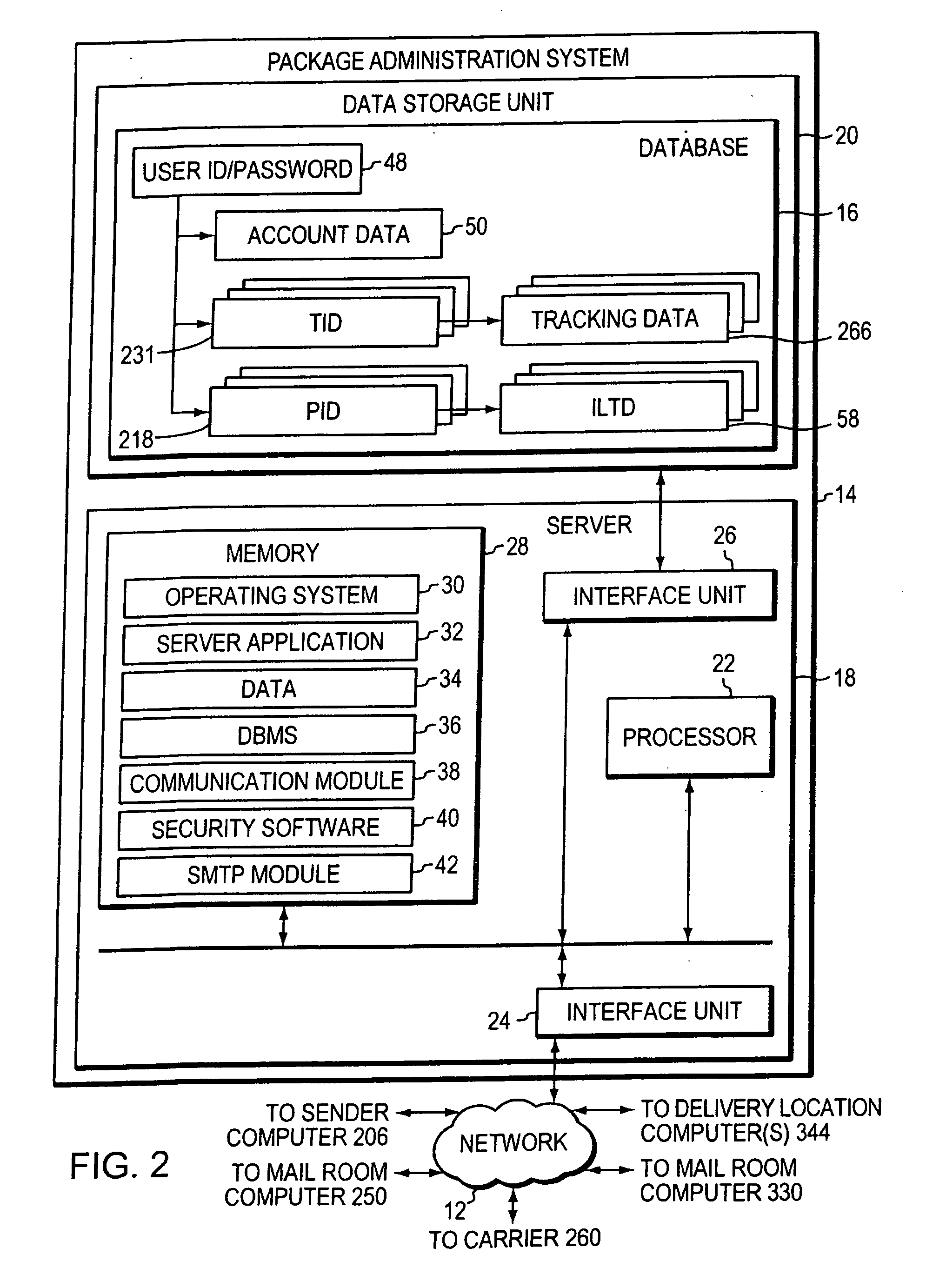Mail sorting systems and methods
a sorting system and mail technology, applied in the field of sorting and tracking the movement of packages, can solve the problems of not providing the “desk-to-desk” visibility, providing little or no “visibility”, and relatively expensive solutions, and achieve the effect of improving the efficiency and accuracy of mail systems and cost efficiency
- Summary
- Abstract
- Description
- Claims
- Application Information
AI Technical Summary
Benefits of technology
Problems solved by technology
Method used
Image
Examples
Embodiment Construction
[0028] The present invention now will be described more fully hereinafter with reference to the accompanying drawings, in which some, but not all embodiments of the invention are shown. Indeed, these inventions may be embodied in many different forms and should not be construed as limited to the embodiments set forth herein; rather, these embodiments are provided so that this disclosure will satisfy applicable legal requirements. Like numbers refer to like elements throughout.
[0029]FIG. 1 is a block diagram of an embodiment of the current invention. Organization 10 has a plurality of different locations, as is typical of many enterprises. In the embodiment of FIG. 1, organization 10 includes a sender location 200 and a delivery location 300. At the sender location 200, at least one sender 202 carries out a process for sending an intra-organizational package 204 to a corresponding recipient 302 located in delivery location 300. The sender location 200 has at least one sender compute...
PUM
 Login to View More
Login to View More Abstract
Description
Claims
Application Information
 Login to View More
Login to View More - R&D
- Intellectual Property
- Life Sciences
- Materials
- Tech Scout
- Unparalleled Data Quality
- Higher Quality Content
- 60% Fewer Hallucinations
Browse by: Latest US Patents, China's latest patents, Technical Efficacy Thesaurus, Application Domain, Technology Topic, Popular Technical Reports.
© 2025 PatSnap. All rights reserved.Legal|Privacy policy|Modern Slavery Act Transparency Statement|Sitemap|About US| Contact US: help@patsnap.com



